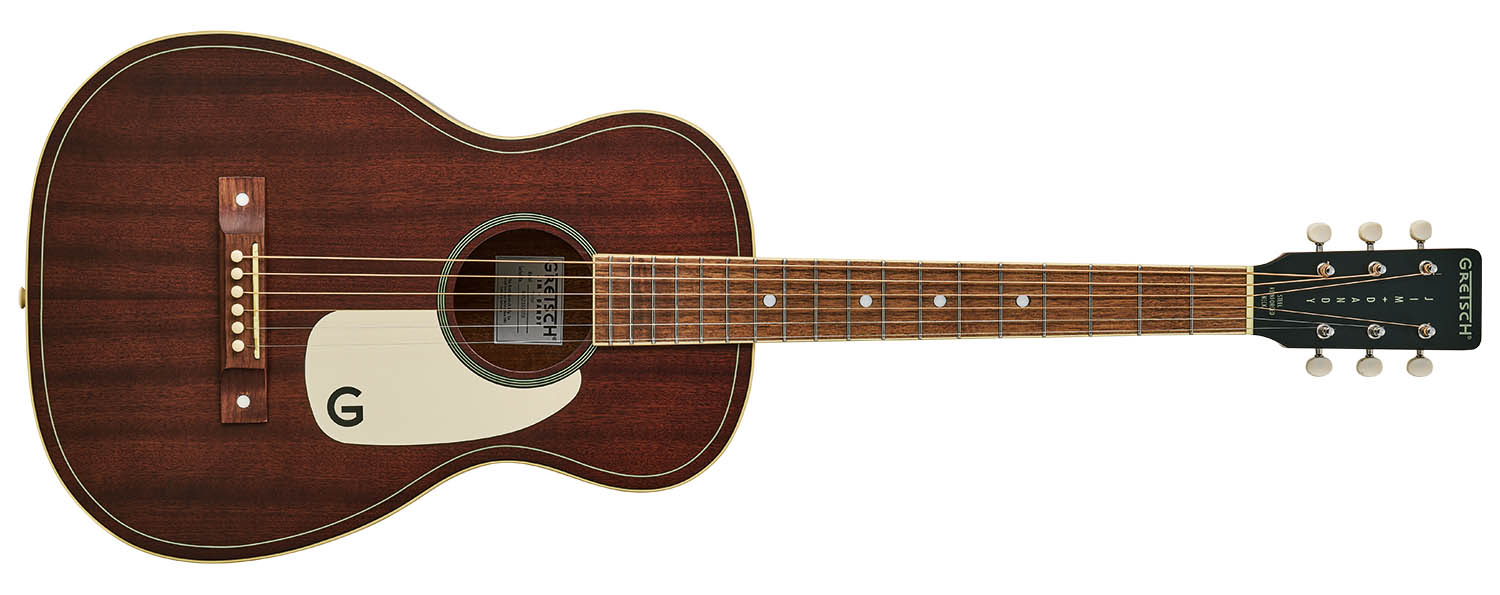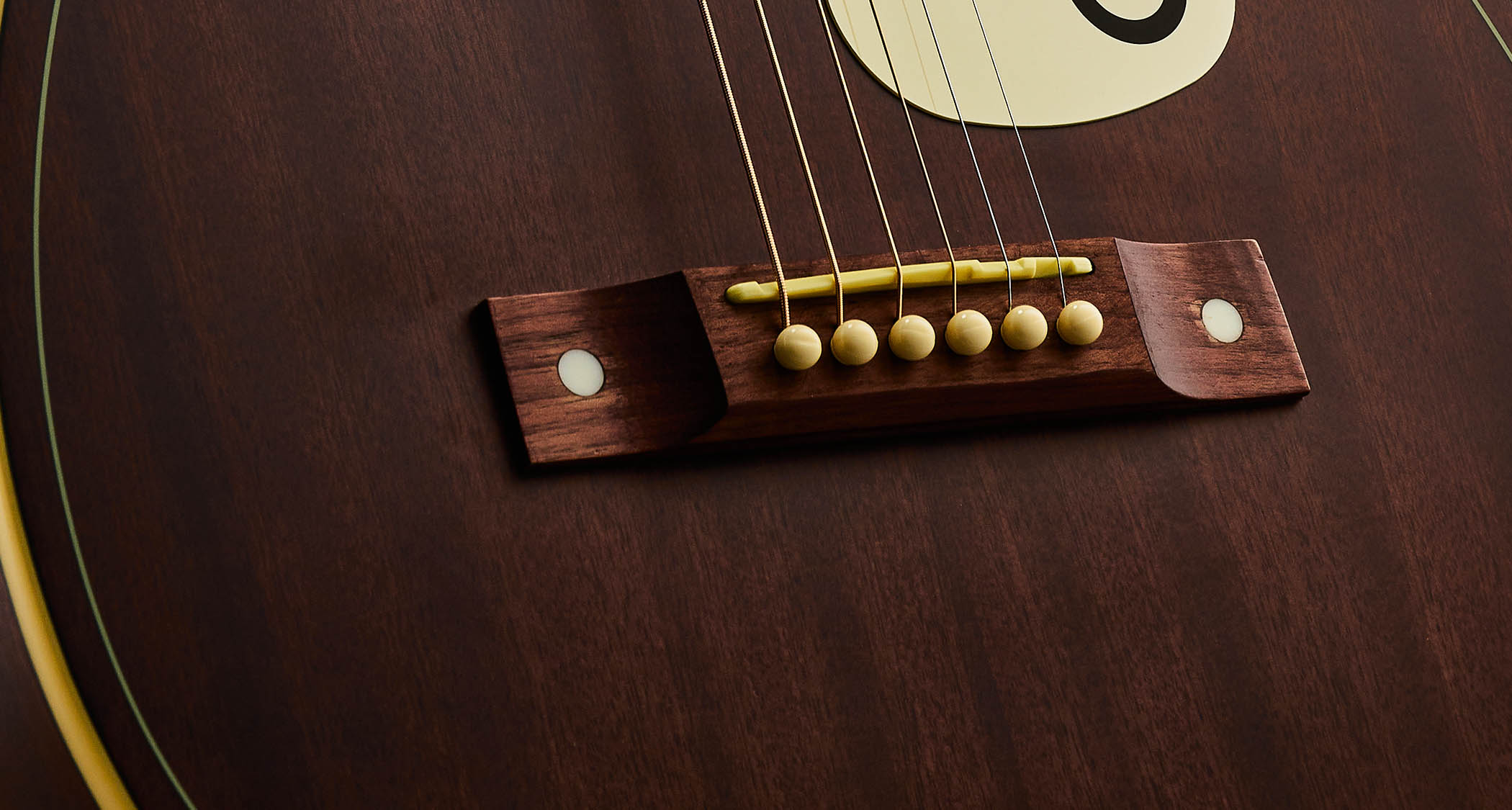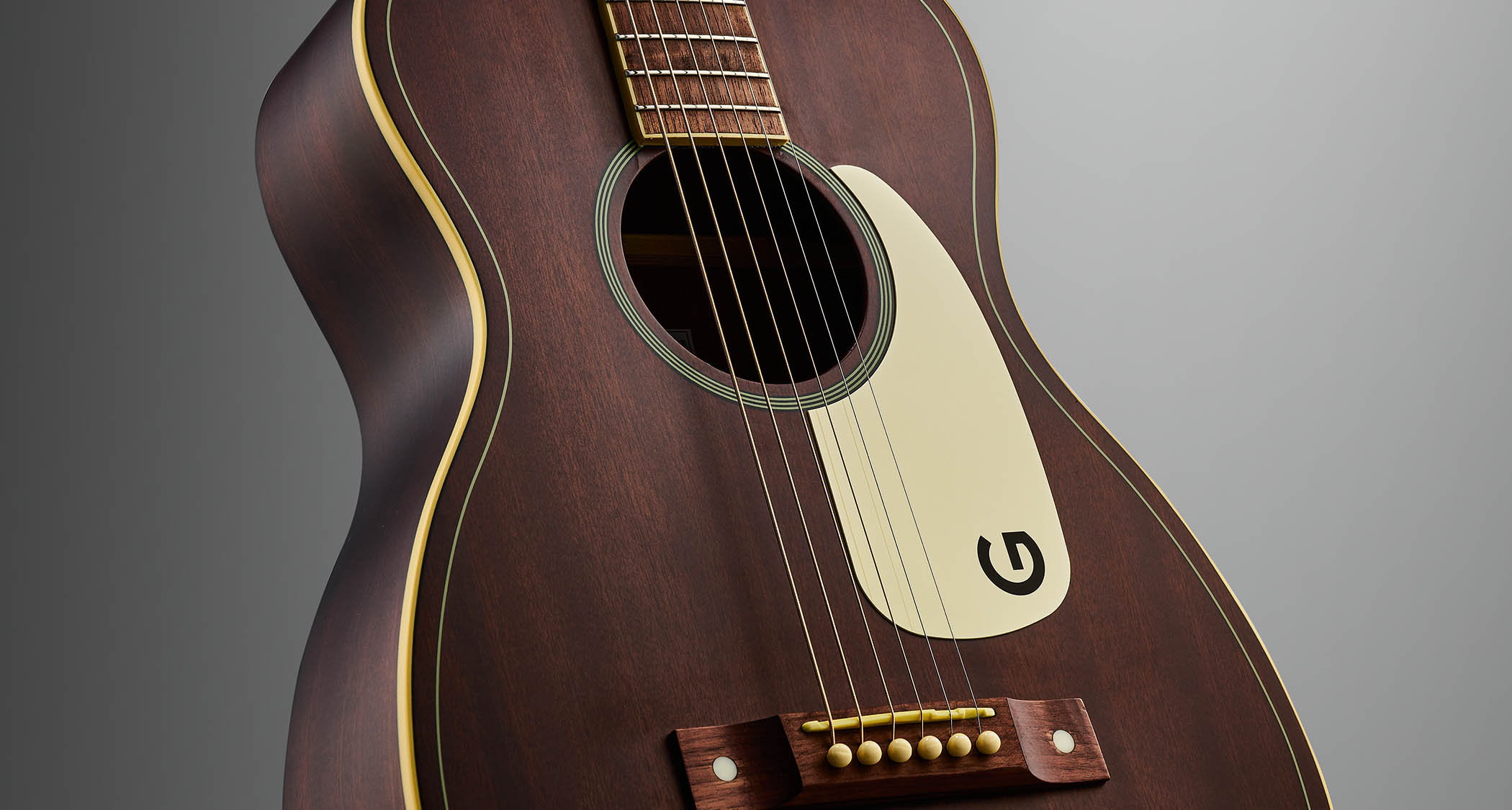Guitar World Verdict
Anyone looking for a budget acoustic with retro looks will be charmed by ol’ Mr Dandy. It’s a hard guitar to put down.
Pros
- +
It looks really cool.
- +
A fun guitar and great option for blues fingerstyle.
- +
Crowd-pleasing neck profile and body size.
- +
Priced for beginners and budget-conscious.
Cons
- -
No electronics.
- -
Tuners a little stiff.
You can trust Guitar World
Once upon a time, in the prelapsarian era before broadband, TikTok and vaping, players could browse guitars in a catalogue before ordering one through the mail. If this was you in the 1930s and you took a shine to a cheap acoustic guitar with a squarish headstock, badged “Rex”, you were in fact buying a Gretsch guitar, and this Rex sub-brand is the inspiration behind Gretsch’s Jim Dandy Concert model.
Now, we’ve seen the JD a few times before in its smaller, parlour-style size, but for 2024, Gretsch has expanded the range to also include Dreadnought and Concert-sized strummers. Here we have the Concert model, and as with the rest, it looks like it’s straight out the ’30s.
Don’t expect many modern appointments, this is a time-machine project. But there have been refinements. The headstock is squarer than its catalogue counterparts, and bears the Gretsch name. The single-ply aged white pickguard has the “G” graphic, matching the tuner buttons. An unfussy black-and-white rosette complements the “Rex Burst” finish.
Gretsch has applied a semi-gloss treatment to body and neck, attenuating some of that new guitar shine. It’s very tactile. There’s painted pinstripe purfling and a single-ply aged white binding tying it together.
Jim Dandy sure looks dapper, the period aesthetic enhanced by three-on-a-plate open-gear tuners and a pinned walnut bridge. The pre-war feel extends to a walnut fingerboard that seats 18 narrow vintage-gauge frets.
But whether the year is 1934 or 2024, some things never change; compact but with bigger lungs than its parlour-sized siblings, the concert acoustic will always be a popular proposition for players. For many, this is the goldilocks option, catering to fingerstyle, strummer and blues picker alike.

The nato neck joins the body at the 14th fret, and is shaped into a pleasing C profile, neither too fat nor too lean. If this Jim Dandy steps out of the box and makes you think of Gibson’s old L-series models, it’ll be because we’ve also got Gibson-esque dimensions by way of a 24.75” scale and 12” fingerboard radius.
All the latest guitar news, interviews, lessons, reviews, deals and more, direct to your inbox!
All of this looks great, but how does it sound? How does it play? At this price, don’t expect the hi-fi quality of a Taylor V-Class acoustic guitar. The tuners are a little stiff.
With a body of laminated basswood, the Jim Dandy’s tone is not going to age as gracefully as a solid-wood acoustic, but it is a tidy build, and in the here and now it provides today’s player with affordable versatility.

This is a viable beginner guitar. The Jim Dandy will happily accommodate your first open chords, and there’s enough sparkle in its voice to support budding crosspickers. But anyone looking for a budget acoustic with retro looks will be charmed by ol’ Mr Dandy. It is a hard guitar to put down.
Specs
- PRICE: $189/£209
- TYPE: Concert-sized acoustic guitar
- TOP: Laminated basswood
- BODY: Laminated basswood
- NECK: Nato, C profile
- FINGERBOARD: Walnut
- HARDWARE: Walnut bridge with compensated saddle, open-gear die-cast nickel tuners with Aged White buttons
- FINISH: Rex Burst [as reviewed], Frontier Stain
- CONTACT: Gretsch
Jonathan Horsley has been writing about guitars since 2005, playing them since 1990, and regularly contributes to publications including Guitar World, MusicRadar and Total Guitar. He uses Jazz III nylon picks, 10s during the week, 9s at the weekend, and shamefully still struggles with rhythm figure one of Van Halen’s Panama.


